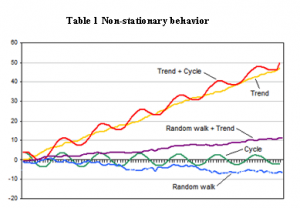— February 15, 2019

Free-Photos / Pixabay
According to Psychology Today, 40% of people will experience the pain of loneliness during their lifetime. Despite its prevalence, the feeling of being alone or isolated is an often-misunderstood condition. Here are some facts.
- Loneliness increases the likelihood of serious illness by repressing our immune systems. Depression, heart disease, strokes, panic attacks, low energy, and mental paralysis can all occur
- Admission of loneliness is contagious. When a person opens up about their sense of negative isolation, 52% of his or her friends are more likely to subsequently admit they have the same challenge
- It’s no longer a condition solely associated with the elderly. The average age of those suffering is declining fast
- It poses a greater health risk than obesity
- It’s worse for our health than smoking 15 cigarettes a day
- Acute loneliness increases the likelihood of early death by 14%
Loneliness has become a global epidemic that we need to recognize. A 2017 study in the UK showed that 9 million Brits suffer from loneliness. That’s a mind-blowing 14% of the entire population.
The consumer cooperative CO-OP calculated that loneliness costs $ 3.5 billion every year in Britain. This financial cost affects employers through sick days, lost productivity, and turnover.
As a response, the UK government recently went ahead and appointed the first ever Minister for Loneliness, a role created by Prime Minister Theresa May who stated, “For far too many people, loneliness is the sad reality of modern life.” She’s right. The minister now in charge of reducing loneliness is Tracy Crouch who cites two key examples of her own extreme isolation that make her a good choice for the job. One was after the birth of her first child and the second was when she became a member of parliament. Focusing initially on the elderly her remit also includes tackling social isolation in the workplace in many ways including situations “where you could be feeling isolated from colleagues or trapped due to your desk-job.” The governments of Sweden and Canada have been inspired by the U.K.’s approach and are now considering major ways to combat loneliness.
Loneliness In The Workplace
So, why is loneliness such an issue in our experience at work? Who is prone and what are the causes?
As we work with groups of employees at all levels across the organization, this is a condition that is not choosy. It doesn’t matter what level, what industry, what size, or region of the world your organization is in.
A 2017 research report by Harvard Business Review found that the most lonely professions are legal practice followed by engineering and science. The least were those that had high interaction levels such as social work, marketing, and sales. Those with professional degrees such as law were 25% more lonely than those with bachelor’s degrees and 20% more than PhDs. The loneliest employees tended to be those who were not religious and non-heterosexual. The point is that there aren’t any exemptions. It’s just that loneliness is more amplified in some than others.
Loneliness is something that can cast its visit on anyone. We sought to reflect on and explore this theme and thought we’d share.
Let’s start at the top: Loneliness among executives
Loneliness among executives often arises through a lack of confidence or recognition, fear of failing, leadership team politics or a lack of work/life balance. It can easily lead to a loss of confidence and self-esteem resulting in the inability to make wise, informed and timely decisions. Procrastination can easily spiral and turn into a mental paralysis. This is especially prevalent in solo entrepreneurs. Overall, the effects of loneliness among executives can be devastating for an entire business.
While some executives are aware of the feeling of loneliness building up inside, many others don’t initially see or acknowledge that they’re lonely. It isn’t until they start seeing dysfunction amongst their executive team that they realize they are alone in needing to make decisions, that they are perceived differently by the team they work with most frequently, and that they don’t have a true partner or person to collaborate with. Recently, I was working with a new CEO who had been promoted from amongst his peer group. Due to his changing role, his ways of interacting with the team had to evolve and the relationships and dynamics of collaborative problem solving had to change also. Rather than the feeling of mutual accountability, the team looked to him for single-point accountability, and the final say on all decisions. It took time for him to realize that his position was becoming more and more lonely.
The Trickle Down Effect
No one is immune. Leaders struggling with the condition can unknowingly impact everyone in an organization. Most sideline their loneliness rather than face it. Some are able to adopt a poker face but when severe isolation strikes, it’s natural for us to send out signals for help, whether we know it or not. In other words, our behaviors can easily change and be recognized by our employees. Trust and morale can all easily waver. Worse still, the contagion can quickly spread.
The inability for different levels of employees to connect with each other can also cause loneliness. Employees can easily feel it’s not their place to form deeper connections with management, whether out of respect, fear or their relative place in the organizational structure. As such, a gap develops which is not healthy. In the same way, management may not want to overstep the mark and “interfere” with what are perceived as personal problems, especially in our ever more litigious business world. The bottom line is that when connection is sidestepped, isolation can blossom.
Isolation Acceleration Through Technology
Technology is quickening the pace of isolation by eroding traditional connection at all levels.
In the quest for increased productivity, we are fast introducing automation to streamline workflows, improve communication (theoretically at least), and reduce mundane tasks. In the process, we’re eliminating the need for in-person interaction.
Sales and marketing meetings have been replaced with marketing automation and CRM tools. Face-to-face project updates have declined in favor of project management platforms. Conference calls, whether audio or video, aren’t like getting around the table. The informal small talk is drastically reduced. There’s often silence as participants join, one by one. It’s like being in an elevator or a doctor’s waiting room. Telecommuting and flexible hours are also causing us to have fewer opportunities to connect, in person.
Of course, there’s no turning back and there shouldn’t be. Technology is continuously changing the way business gets done. It’s a critical consideration and force in our environments. The point is that we need to be more mindful of the tradeoff of technology and automation versus in-person communication. There needs to be a balance, and to create it we need to bring the issue of loneliness out into the open.
Getting Past The Point Of Loneliness
Whether the result of social change, personal doubt, automation or other factors it’s clear that we have to recognize and address loneliness in the workplace. Next week, in the second part of this blog post, we’ll look at this in more detail and provide a range of possible solutions worthy of consideration for your business.
Business & Finance Articles on Business 2 Community
(46)








